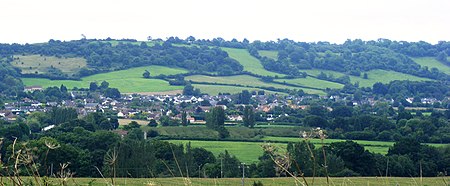Bishop Sutton

Bishop Sutton (grid reference ST587597) is a village on the northern slopes of the Mendip Hills, within the affluent Chew Valley in Somerset. It lies east of Chew Valley Lake and north east of the Mendip Hills, approximately ten miles south of Bristol on the A368, Weston-super-Mare to Bath road between West Harptree and Chelwood. Bishop Sutton and the neighbouring village of Stowey form the civil parish of Stowey Sutton. The village has a large village hall, a public house (The Red Lion), an organic culinary school and bed and breakfast (Meadow View), a small supermarket, several shops including a Post Office within the village store, a tennis club and a caravan park. Next to the village hall are sports pitches where Bishop Sutton F.C. play. The lake is a popular place for children, adults and the elderly alike with beautiful views and entertainment such as fishing and sailing. There is a museum and tea shop on one side of the lake and a restaurant on the other. The main industry in the village was a coal mine owned by J. Lovell & Sons from 1835 to 1929, which was part of the Somerset coalfield. There was also a large flour mill, part of which was converted into flats.
Excerpt from the Wikipedia article Bishop Sutton (License: CC BY-SA 3.0, Authors, Images).Bishop Sutton
Sutton Hill Road, Bristol Stowey-Sutton
Geographical coordinates (GPS) Address Nearby Places Show on map
Geographical coordinates (GPS)
| Latitude | Longitude |
|---|---|
| N 51.3348 ° | E -2.5921 ° |
Address
Sutton Hill Road
BS39 5UW Bristol, Stowey-Sutton
England, United Kingdom
Open on Google Maps









